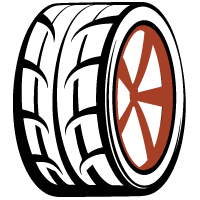Audi Q7 4M Facelift [2019 .. 2025] Oceania Wheel fitment guide

4M Facelift [2019 .. 2025] Oceania
Audi Q7 4M Facelift [2019 .. 2025] - Modifications
Petrol:
55 TFSi quattro V6 335hpAudi Q7 4M Facelift [2019 .. 2025] 45 TDi quattro
228 hp- Generation: 4M Facelift [2019 .. 2025]
- Production: [2020 .. 2023]
-
Sales regions: South Korea, Southeast Asia, Oceania
-
Power: 228 hp | 170 kW | 231 PS
- Engine: 3.0 L, , Diesel
-
Center Bore / Hub Bore:
-
Bolt Pattern (PCD):
-
Wheel Fasteners: Lug bolts
-
Thread Size:
-
Wheel Tightening Torque:
| Tire | Rim | Offset Range mm | Backspacing mm inches | Tire Weight kg lb |
|
||
|---|---|---|---|---|---|---|---|
| OE 255/55ZR19 111Y | 8.5Jx19 ET28 | 26 - 30 | 149 5.87 | 15.1 33.4 | 2.4 35 |
OE
|
|
| 235/65R18 106W | 8Jx18 ET20 | 18 - 22 | 134 5.28 | 14.7 32.4 | 2.4 35 |
|
|
| 255/60ZR18 108Y | 8Jx18 ET25 | 23 - 27 | 139 5.47 | 15.5 34.1 | 2.4 35 |
|
|
| 255/60R18 108H | 8Jx18 ET25 | 139 5.47 | 15.5 34.1 | 2.4 35 |
|
||
| 255/55R19 111H | 8Jx19 ET28 | 26 - 30 | 142 5.59 | 15.1 33.4 | 2.4 35 |
|
|
| 255/50R20 109H | 8Jx20 ET28 | 142 5.59 | 14.7 32.3 | 2.6 38 |
|
||
| 285/45R20 112V | 9Jx20 ET28 | 26 - 30 | 155 6.10 | 15.3 33.7 | 2.6 38 |
|
|
| 285/45ZR20 112Y | 9Jx20 ET28 | 26 - 30 | 155 6.10 | 15.3 33.7 | 2.6 38 |
|
|
| 285/40ZR21 109Y | 9.5Jx21 ET31 | 29 - 33 | 164 6.46 | 14.8 32.6 | 2.6 38 |
|
Audi Q7 4M Facelift [2019 .. 2025] 50 TDi quattro
282 hp- Generation: 4M Facelift [2019 .. 2025]
- Production: [2020 .. 2023]
-
Sales regions: South Korea, Oceania
-
Power: 282 hp | 210 kW | 286 PS
- Engine: 3.0 L, , Diesel
- Trim Levels: S line
-
Center Bore / Hub Bore:
-
Bolt Pattern (PCD):
-
Wheel Fasteners: Lug bolts
-
Thread Size:
-
Wheel Tightening Torque:
| Tire | Rim | Offset Range mm | Backspacing mm inches | Tire Weight kg lb |
|
||
|---|---|---|---|---|---|---|---|
| OE 285/40ZR21 109Y | 9.5Jx21 ET31 | 29 - 33 | 164 6.46 | 14.8 32.6 | 2.6 38 |
OE
|
|
| 255/60R18 108H | 8Jx18 ET25 | 139 5.47 | 15.5 34.1 | 2.4 35 |
|
||
| 255/60ZR18 108Y | 8Jx18 ET25 | 139 5.47 | 15.5 34.1 | 2.4 35 |
|
||
| 255/55R19 111H | 8Jx19 ET28 | 142 5.59 | 15.1 33.4 | 2.4 35 |
|
||
| 255/55ZR19 111Y | 8.5Jx19 ET28 | 26 - 30 | 149 5.87 | 15.1 33.4 | 2.4 35 |
|
|
| 255/50R20 109H | 8Jx20 ET28 | 142 5.59 | 14.7 32.3 | 2.6 38 |
|
||
| 285/45ZR20 112Y | 9Jx20 ET28 | 26 - 30 | 155 6.10 | 15.3 33.7 | 2.6 38 |
|
|
| 285/45R20 112V | 9Jx20 ET28 | 26 - 30 | 155 6.10 | 15.3 33.7 | 2.6 38 |
|
|
| 285/35ZR22 106Y | 10Jx22 ET26 | 24 - 28 | 166 6.54 | 14.2 31.2 | 2.8 41 |
|
Audi Q7 4M Facelift [2019 .. 2025] 55 TFSi quattro
335 hp- Generation: 4M Facelift [2019 .. 2025]
- Production: [2021 .. 2023]
-
Sales regions: Central & South America, Southeast Asia, Oceania
-
Power: 335 hp | 250 kW | 340 PS
- Engine: 3.0 L, , Petrol
- Trim Levels: S line
-
Center Bore / Hub Bore:
-
Bolt Pattern (PCD):
-
Wheel Fasteners: Lug bolts
-
Thread Size:
-
Wheel Tightening Torque:
| Tire | Rim | Offset Range mm | Backspacing mm inches | Tire Weight kg lb |
|
||
|---|---|---|---|---|---|---|---|
| OE 109Y | 29 - 33 | 164 6.46 | 14.8 32.6 | 2.6 38 |
OE
|
||
| 111H | 26 - 30 | 142 5.59 | 15.1 33.4 | 2.4 35 |
|
||
| 111Y | 26 - 30 | 149 5.87 | 15.1 33.4 | 2.4 35 |
|
||
| 109H | 142 5.59 | 14.7 32.3 | 2.6 38 |
|
|||
| 112Y | 26 - 30 | 155 6.10 | 15.3 33.7 | 2.6 38 |
|
||
| 112V | 26 - 30 | 155 6.10 | 15.3 33.7 | 2.6 38 |
|
||
| 106Y | 24 - 28 | 166 6.54 | 14.2 31.2 | 2.8 41 |
|
Check the wheel fitment data for the Audi Q7 4M Facelift [2019 .. 2025] in other regions:
The size of the hole in the center of a wheel is known as the center bore or centerbore.
- Recommended for winter
- Run-flat tires
- Link comes to the calculator page for comparison
- Steel wheels
OE - Original Equipment
![]() - Tire Pressure
- Tire Pressure
![]() - Front axle
- Front axle
![]() - Rear axle
- Rear axle
Offset is the distance in millimetres from the centre line of the wheel to the wheel’s mounting face. Given that the mounting face can be either in front of or behind the centreline, the offset can be either neutral, positive or negative.
The Pitch Circle Diameter (PCD) is the diameter of the circle which passes through the centre of all the studs, wheel bolts or wheel rim holes
hp - Mechanical horsepower
kW - Kilowatts
PS - Metric horsepower
Wheel backspace is the distance from a wheel's mounting surface to the back edge of the wheel.
Tire pressure is a vehicle's recommended cold tire inflation pressure. It is measured in bars or PSI (pounds per square inch).
A sales region is a global automotive region in which a vehicle was officially sold or is still being sold.
Ex.: 7J x 15 Rim width (inches) x rim diameter (inches)
ISO standard Ex.: M12 x 1.25 Nominal diameter (mm) x pitch (mm)
UN-series Ex.: 9/16" - 18 UNF
Thread size (in) - thread pitch
UNF - Unified National Fine Thread
Example: 215/55 R16 91 T
215 is the tire width in mm
55 is the ratio of profile height to width or simply 'profile'. With the same width, the larger this indicator, the higher the tire will be and vice versa
16 - diameter of the wheel (disk) in inches. (It is the diameter, not the radius!). This is the inner size of the tire or the outer size of the rim
91 - load index. This is the level of maximum permissible load on one wheel
T - tire speed index
The method of attaching a wheel to a hub: wheel nuts or wheel bolts
The torque value specified by the manufacturer for wheel bolts or wheel nuts, which is to be set when tightening on the torque tool (torque setting). A rotational force given in Newton metres (Nm) or foot-pounds (ft-lbs), wheel torque measures lug nut / bolts tightness
Rating
The tires included with a new vehicle when it is purchased. OE tires are specifically chosen by the vehicle manufacturer to make the most of the vehicle's performance characteristics.

![Audi Q7 4M Facelift [2019 .. 2025] Audi Q7 4M Facelift SUV](https://cdn.wheel-size.com/thumbs/ff/73/ff736d9010971742d90e3b9a2d051042.jpg)








